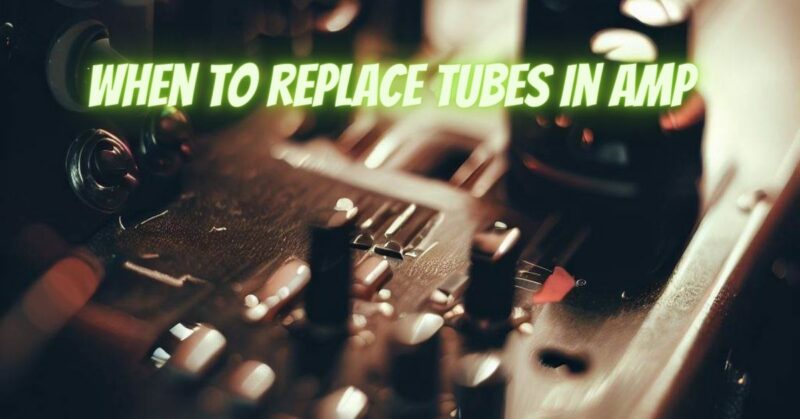Tubes, also known as valves, are essential components in tube amplifiers, contributing to their iconic warm and rich sound. However, like any electronic component, tubes have a limited lifespan and will eventually wear out. Knowing when to replace tubes in your amp is crucial to maintain optimal performance and prevent potential issues. In this article, we’ll discuss the signs that indicate it’s time to replace tubes in your amp and the importance of proper maintenance.
Signs It’s Time to Replace Tubes
- Diminished Sound Quality: One of the most noticeable signs of worn-out tubes is a decline in sound quality. You might experience reduced clarity, loss of definition in the midrange and high frequencies, or a lack of warmth in the overall sound. If your once vibrant and detailed sound becomes dull and lifeless, it’s likely time for a tube replacement.
- Excessive Hum or Noise: Worn-out tubes can introduce unwanted noise into the audio signal. You may notice increased hum, hiss, crackling, or popping sounds. If these noises are more prominent than usual, it’s a clear indication that your tubes may need replacement.
- Unstable Bias: Proper biasing of power tubes is crucial for the efficient and safe operation of your amplifier. If the bias drifts or becomes unstable, it could be a sign of tube wear, and your tubes may need to be replaced and properly biased.
- Reduced Output: Power tubes that have reached the end of their lifespan can result in reduced output power. Your amplifier might not produce the same volume or drive that it used to, even when pushing it to its limits.
- Visual Inspection: In some cases, you might be able to visually inspect the tubes for signs of wear. Look for darkened or discolored glass, white deposits (known as “white spots”), or a milky appearance inside the tubes. These visual cues can indicate tube deterioration.
The Importance of Proper Maintenance
To prolong the lifespan of your tubes and ensure optimal performance, proper maintenance is essential. Here are some tips for taking care of your amp and its tubes:
- Bias Adjustment: Regularly check and adjust the bias of your power tubes as per the manufacturer’s guidelines. Correct biasing helps ensure that the tubes operate within safe parameters and helps extend their life.
- Ventilation: Keep your amp in a well-ventilated area to prevent excessive heat buildup, as heat can accelerate tube wear.
- Tube Rolling: Experimenting with different tube brands and types (known as “tube rolling”) can be a fun way to find your preferred sound, but be cautious not to push tubes beyond their limits or mismatch them with your amp.
- Professional Inspection: If you suspect your tubes need replacement or encounter any performance issues, have your amp inspected by a qualified technician. They can accurately diagnose tube wear and perform the necessary replacements and adjustments.
Knowing when to replace tubes in your amp is crucial for maintaining optimal sound quality and preventing potential issues. Diminished sound quality, excessive hum or noise, unstable bias, reduced output, and visual signs of wear are all indications that your tubes may need replacement. Proper maintenance, including regular bias adjustments, adequate ventilation, and professional inspections, will help prolong the lifespan of your tubes and keep your amp performing at its best. By taking care of your amp and staying attentive to the signs of tube wear, you can continue enjoying the iconic sound of tube amplification for years to come.


